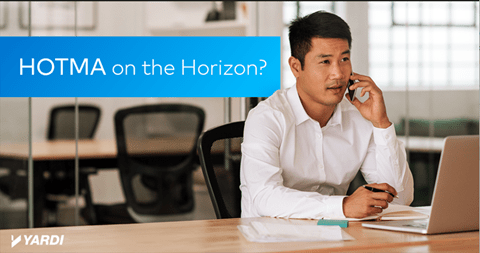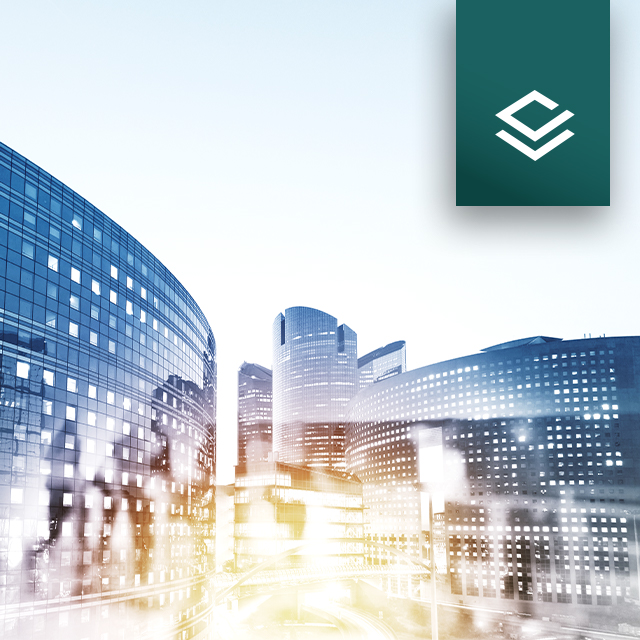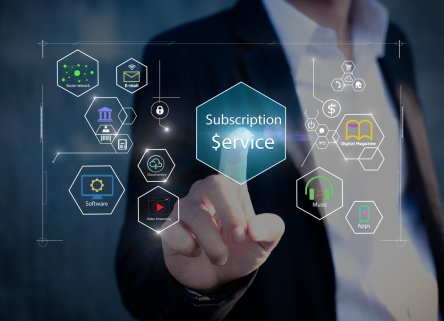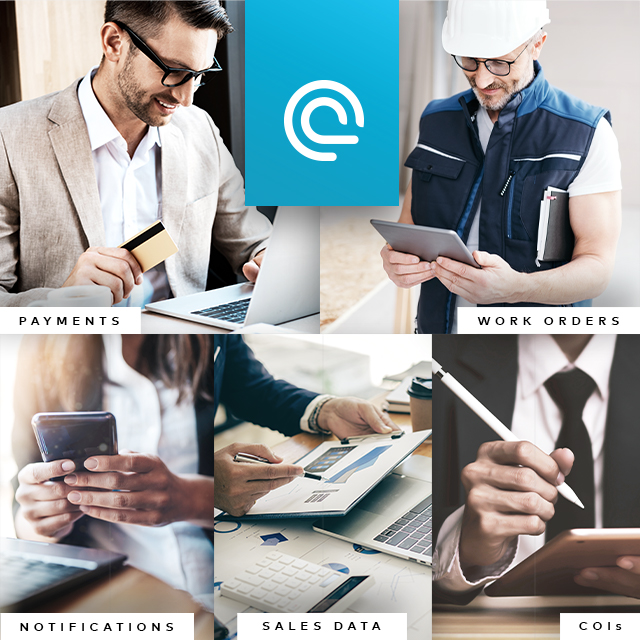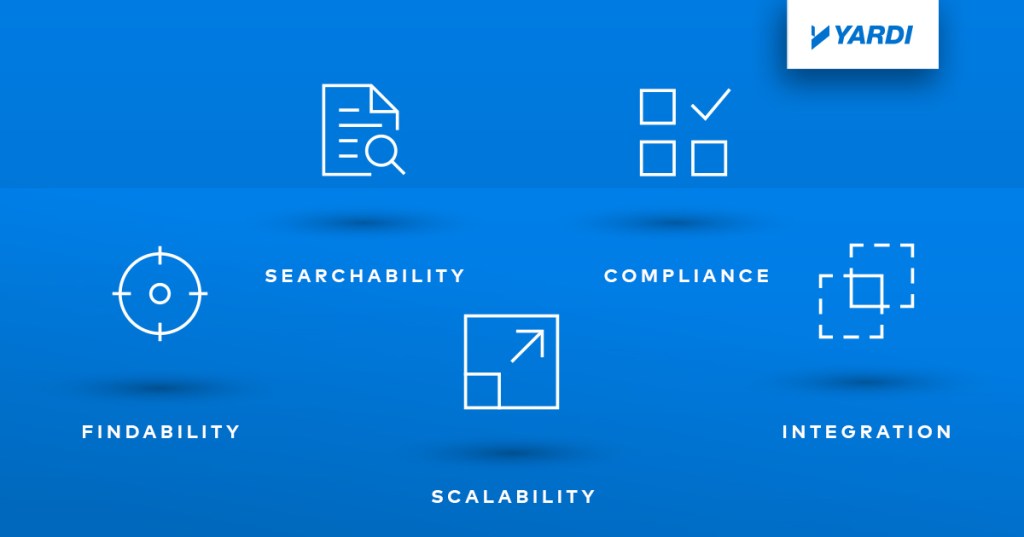Apple revealed its latest update last week and got us excited! Let’s explore the latest update and its standout features with a complete overview of some new enhancements. Apple is improving lives in significant and artful ways. The Apple Watch motivates you to get moving, informs you of healthy heart rates and can even alert you when you have gotten into an accident or emergency has been detected. The next-gen Apple Watch, Series 9, is silicon with new features. The silicon now unlocks innovative features like advanced workout metrics, sleep stages and car crash detections. S9 SiP boosts performance and capabilities, making it the most potent watch chip. The s9 CPU has 5.6 billion transistors, 60 percent more than series 8, and its GPU is 30 percent faster. It also has a 40core Neural Engine that can process machine learning tasks up to twice as fast. This all makes the watch have 18-hour battery power. Siri will be improved on the device and won’t have Wi-Fi or cellular data interruptions. One standout feature is the Double Tap feature. Double-tap your index finger to your thumb when you cannot tap the watch. Play and pause music while carrying groceries, answer a call while paddleboarding, or reply to a message while walking the dog with a simple double tap! Apple is making environmental differences by being carbon neutral. By 2030, Apple plans to be carbon neutral across its entire business and reduce greenhouse gas emissions. Office electricity is all solar powered, and all Apple manufacturing will be clean electricity by the end of the year. Packaging will be fiber-based and low-carbon mission transportation like ocean ships. The iPhone 15 now has HDR 1600 nits and peak brightness. It comes in 6.1- and 6.7-inch sizes. It has...
Revolutionize Learning
With Multifunctional Training
Are you ready to revolutionize your company’s training and onboarding processes? Say goodbye to traditional learning plans and welcome the era of multifunctional, cutting-edge assignments that will take your employees’ learning experience to new heights. According to Sapling HR, the average new hire is expected to complete 54 activities during their onboarding process. These activities help ensure the employee is set up for success in their new role. With the latest advancements in learning management systems, it’s time to unlock the power of consolidated tasks and personalized learning paths. Gone are the days of cumbersome paperwork and disjointed training modules. Multifunctional learning plans consolidate onboarding tasks, form completions, training and email campaigns, all while seamlessly tracking progress on a single assignment. Imagine the convenience of having everything your new employees need in a centralized learning plan, where they can refresh skills or revisit resources at any time. So, what exactly can these multifunctional learning plans offer? Let’s explore the various elements that can be included in an Aspire learning plan to make it more inclusive of steps that might otherwise be completed outside of the LMS with less efficiency or consistency: Narrative instructions: Engage your employees through dynamic video and text instructions that provide clear guidance and foster a deeper understanding of the tasks at hand. Self-paced courses and live training: Combine the flexibility of self-paced online courses with interactive live training sessions. Empower your employees to learn at their own pace while still benefiting from valuable real-time interactions. Company policies and resources: Ensure that your employees have easy access to essential company policies, procedures and other valuable resources that help them navigate their roles with confidence. Graded online assignments and quizzes: Assess your employees’ progress and knowledge retention through engaging online assignments and quizzes. Provide immediate feedback and promote a continuous learning cycle. Customizable acknowledgements: Tailor tasks with customizable acknowledgments to recognize your employees’ achievements and motivate them to reach new milestones. Reference content and checklists: Equip employees with reference materials and checklists that serve as handy reminders and support their learning journey. Esign documents and forms: Simplify administrative processes by integrating electronic signatures for documents, forms and checklists, ensuring seamless completion and reducing paperwork. Pre-scheduled custom letters: Strengthen communication and engagement by automating pre-scheduled custom letters that provide personalized updates, encouragement and important information. But why settle for the basics when you can take your learning plans to the next level? Unlock even more potential with these advanced features: Elective steps with “Choose Your Path” options: Cater to diverse learning preferences by offering elective steps that allow employees to choose their own learning paths. Empower them to explore topics that resonate with their interests and goals. Pre-scheduled refresher training campaigns: Ensure long-term knowledge retention and skill enhancement by automating pre-scheduled refresher training campaigns. Keep critical concepts top of mind, solidify understanding and support long-term change. Ensure long-term knowledge retention and skill development by adding pre-scheduled refresher training courses that auto-unlock days or weeks after the learning plan is completed. Surveys, polls and chat groups: Foster a sense of community by creating learning plan task steps. Prompt employees to participate in a chat group or a class discussion thread to fulfill an assignment. Test out for advanced learners: Customize learning paths to accommodate different skill levels. Let advanced learners demonstrate their proficiency by testing out of certain modules, while beginners benefit from hands-on field trips or experiential learning opportunities. Step-specific student nudge emails: Keep your employees motivated and on track authorizing the LMS to send nudge email campaigns when unlocked steps need attention. Available nudges include deadline reminders, encouragement, and tips and tricks. Point rewards and badges: Gamify your learning plans by incorporating point rewards and badges as employees progress through key milestones. Embrace the future of employee development with consolidated learning plans that deliver highly personalized experiences while simplifying access and messaging. Ready to embark on this...
Online Coursework
The Core of Yardi Aspire
What do you think of when you hear the words Yardi Aspire? If you know Aspire helps property managers train their team, then you may think online courses are what it has to offer. And, you wouldn’t be wrong. But, of course, over the years, Aspire has grown. We’ve added new features and technologies that are benefiting property managers from every component of the industry, including: commercial, affordable, PHA, multifamily, industrial and every other type of property managed by our clients. Yardi launched Aspire in 2013, and over the years it’s grown into a complete learning management solution (LMS). Aspire helps trainers and human resources professionals develop talent, track growth, communicate with employees, host live meetings, maintain compliance with government regulations, and much more. And through all of that development, it’s true that on-demand, online classes are among the most popular features of Yardi Aspire. Every training program relies on content, and Aspire comes with hundreds of predesigned courses covering topics for professional roles found in property management. Aspire clients also have access to tools to design their own custom content. With all of that available standard in Aspire, it’s no wonder many of us still think of the Aspire LMS as primarily a tool for getting on-demand coursework onto the screens of employees. So, let’s take a moment to recognize the benefits of online classes. What better way to do so than by highlighting how we at Yardi use them to train our own team? Enhancing Learning with a Curated Learning Approach Aspire helps Yardi drive seamless, personalized online experiences and workflows for employee tasks and activities. It helps our company craft and consolidate work activities into centralized, simplified and highly accessible assignments. We benefit from Aspire by seeing higher employee success and...
Drive Engagement
With Training That Sticks
One of the most popular classes at this week’s Yardi Advanced Solutions Conference – and past events – focuses on mastering the art of creating and delivering transformative training programs. Taught by Yardi Aspire team members Patty Evans, industry principal, and Michael Joiner, senior manager for client service and content, the class demonstrates how to use software to create experiential learning exercises that stick with employees long after the training is completed. The attraction of ‘experiential learning’ This concept can be summarized as “learning by doing.” It encompasses such interactive experiences as games, point-based rewards, focus group discussions and group projects. “By engaging students in hands-on experiences, application, and reflection, they are better able to connect theories and knowledge to real-world situations, including those that impact property management success,” Evans says. Effective experiential learning assignments include simulated software skills practice sessions, video demonstration assignments, chat-based role play, scenario-based group problem-solving, and stretch exercises that challenge employees to identify and solve a real-world issue facing the organization. A study by PwC showed that employees who participate in scenario-based simulations retain 75% more information than those in traditional training methods. Additional research by LinkedIn found that 68% of employees prefer to learn through collaborative and social methods, highlighting the value of peer interaction. “By aligning with the way adults learn, experiential learning maximizes knowledge retention and skill development,” Joiner says. Linking motivation and engagement Before thinking about engagement, consider some of the principal causes of learner disengagement from a curriculum: How does that relate to engagement? Motivation, which manifests as the sense of satisfaction or reward gained from accomplishment, is the driving force that prompts a learner to take action, while engagement is the observable behavior produced by the motivation. In employee training, one of the...
Making It Real
Can Holograms Enhance Work?
Holographic technology – once the stuff of science fiction, enabled with Nobel Prize-winning innovation, increasingly used in fields ranging from education and military planning to medicine and entertainment – is receiving attention as a potentially transformative workplace technology. Holograms are produced by an imaging process in which lasers capture and replicate objects into detailed three-dimensional projections of diffracted light that preserve the depth of the original physical source it displays. It is, one observer says, “the intersection of light and matter, designed to be observed from all perspectives.” The current state of the art comprises two laser beams collaborating to create solid light holographs in 10 billion pixels per square meter in ultra high definition. Hungarian-British physicist Dennis Gabor pioneered holographic technology, winning a Nobel Prize in Physics in 1971. Providing a ‘magic window’ Holographic technology “works like a magic window, where users can talk, gesture and make eye contact with another person, life-size and in three dimensions,” says Andrew Nartker, director of product management at Google, whose Project Starline aims to create 3D projections that give workers to appearance of speaking to each other across a window. Star Wars aficionados may have been introduced to holograms with Princess Leia’s distress call in the movie franchise’s first installment in 1977. An ABBA “reunion” in 2022 featured the band’s members projected as holograms. (Certain other concert projections of music legends reflected 2D images off a semi-transparent surface in an effect known as Pepper’s Ghost. Lacking depth and volume, they weren’t true holograms, contrary to popular belief.) Expanding business applications And now, this technology is providing new resources for the business world. For example, holograms can give retail shoppers 360-degree views of items. Models created with holograms help military decision-making by offering detailed visual assessments of...
Yardi’s HOTMA Plan
Implementing HUD’s changes
Spend time with professionals from the affordable housing space and public housing agencies and you’ll likely hear a timely HUD topic brought up in conversation: HOTMA. It’s a buzz that has many public housing agencies and affordable housing providers asking questions and perhaps feeling concerned about how they will manage to implement new compliance mandates. We met up with Gabrielle Van Horn, Yardi PHA director and Dave Kessler, Yardi vice president of affordable housing, to learn more about HOTMA and what it means for PHAs and affordable housing organizations. They also provide insight on Yardi’s plans to accommodate new compliance mandates that will affect households as they qualify for housing units. Q: First, tell us what HOTMA stands for? Gabrielle: HOTMA is an acronym for the Housing Opportunity through Modernization Act. It was signed into law in July 2016 and goes into full effect on January 1, 2024. Q: What is Congress asking HUD to achieve by implementing HOTMA? Dave: HOTMA is an opportunity for HUD to standardize the way affordable housing programs calculate income. For example, in the past, a household’s calculated income would vary depending on the applicable affordable housing program. Now, with HOTMA, it’s less confusing for housing providers because it standardizes the deductions and exemptions that factor into making a final determination of a household’s income. Gabrielle: Factors such as deductions from income for households with seniors are not only being recalculated, but also standardized across certain programs. That’s good news for programs affected by HOTMA. Q: What should affordable housing providers be working on now to prepare for upcoming changes? Gabrielle: Like anything with HUD, there are aspects of HOTMA that may be a challenge to comprehend and implement. There is a lot to learn and prepare for as the January deadline approaches. Dave: Yardi, as well as other affordable housing and PHA software vendors, is updating our technology to accommodate changes required by HOTMA. We’ll have online coursework for our clients to make sure they remain compliant throughout the process. We are also expecting to soon see HUD’s updates to forms 50058 and 50059, as well as other forms that are directly affected by HOTMA. Once we see those in final format, Yardi will make sure our clients have access to them in our software and that the data fields and calculation formulas are adjusted for HOTMA compliance. Gabrielle: I also want to express that training organizations and nonprofit affordable housing advocacy groups are the best resources for learning about HOMTA. I follow NAHRO’s blog and social media posts for up-to-date information on HOMTA, including training resources they’ve been sponsoring. I recommend this type of training for affordable housing providers and PHAs, and that they get started as soon as possible. Q: What would be an example of an upcoming change? Gabrielle: One that’s sure to help many is the increased income deductions for seniors. Increasing those deductions will make it easier for households to qualify for a unit. It makes sense to make that adjustment now, especially as inflation has increased expenses. Dave: Yes, I’m not sure if HUD expected the pandemic and its residual effects in terms of wage increases when they passed HOTMA in 2016. However, the timing is perfect as it will help households qualify for needed housing resources even as their income may have risen due to high inflation rates over the past few years. Q: How will Yardi software adapt to HOTMA? Dave: We are actively working on updates to Yardi Voyager and Breeze Premier as well as RentCafe, our portal solution for applicants, renters, and private landlords. We’re focused on having that technology ready when our clients are required to adopt HOTMA standards. Gabrielle: We’ve also made additional support staff available so that our clients can get help with Yardi software. But, again, learning HOTMA regulations and compliance mandates is best done with training resources such...
Power of Customization
Elevate Training with Aspire
In the dynamic world of property management, training and development play a pivotal role in ensuring the success of your team and the smooth operation of your business. As a leading learning management system (LMS) provider, we understand the importance of seamless integration and customization when it comes to training your valuable workforce. Our cutting-edge platform offers embedded authoring tools and customizable content, empowering your organization to shape your training programs according to your unique needs. Read on to see why incorporating your own policies into training content is key for maximizing learning outcomes, enhancing compliance and fostering a cohesive team culture. Tailored training No one knows your business better than you do. Each property management company has its own set of values, policies and processes that drive its operations. By integrating your company’s specific policies and procedures into standardized training content, you can provide your team members with relevant and practical information that directly applies to their roles. Customizable content allows you to adapt training material to reflect your unique company culture, ensuring that your employees understand the specific rules, regulations and best practices that govern your organization. Cohesive team culture Incorporating your company policies into standardized training content goes beyond compliance and procedural adherence — it fosters a sense of belonging and unity within your team. When employees receive training that aligns with the company’s values, policies and processes, you create a sense of relevance and ownership among your employees. Customized training content reflects your company’s unique identity, helps build a cohesive team culture that promotes collaboration and leads to enhanced performance and productivity in day-to-day responsibilities. Easy updates and maintenance Company policies and processes evolve over time to adapt to industry trends and regulatory changes. With Aspire’s embedded authoring tools, you can easily update and modify the content to reflect these updates. Instead of relying on external providers to make changes, you have full control over the content, ensuring that it remains current and aligned with your organization’s ever-evolving needs. Aspire provides full audit trail and revision history, plus page-level customization locks that prevent your content from being overwritten during content upgrades. This agility empowers your company to respond swiftly, update a single source and ensure your employees always have access to the most up-to-date information. Consistency and compliance Maintaining consistency and compliance with industry regulations and legal requirements is of paramount importance in property management. When you include your company policies and custom processes in standardized content, you establish a unified approach that reinforces compliance messages, making them more visible and accessible to your employees. By embedding policies into the training program, you create a seamless learning experience that ensures everyone understands the guidelines, minimizing the risk of non-compliance and potential legal ramifications. Cost and time efficiency Embedding your company policies and custom processes into standardized training content can significantly reduce training costs and time. By utilizing Yardi Aspire interactive courses and customizing them to fit your needs, you can save valuable resources that would have been spent on developing training content from scratch. This creates a harmonious blend of product, industry expertise and internal practices in a single learning experience, increasing efficiency and maximizing training outcomes. A connected and customizable solution for all your training needs Training can play a critical role in the success of property management companies. By incorporating your company policies and custom processes into Aspire’s training content, you empower your team with relevant knowledge, reinforce compliance and strengthen your organization’s unique identity. Our customizable solution, equipped with customizable content and embedded authoring tools, enables you to seamlessly integrate your policies into your training, fostering a cohesive team culture and maximizing learning outcomes. Learn more about Yardi Aspire and reach out to see how you can optimize your property management training to drive success, efficiency and compliance within your...
Empowering Property Management
With AI Synergy
Artificial Intelligence was an important focus at the 2023 Apartmentalize conference. Utilizing AI will empower property management companies, but what is the difference between AI in operations? Augmented versus generative AI is used differently for specific tasks for property management. Let’s explore a synergistic approach that combines augmented and generative AI for enhanced customer experiences and drives operational efficiencies. Revolutionize property management with generative AI that emphasizes creative output in marketing efforts, including realistic property visualizations, creating virtual tours or personalized marketing content. For example, Fidelity vice president Sarah Hoffman recently spoke about how generative AI will improve efficiencies and creativity: “Generative AI can definitely take efficiency to the next level.” In contrast, augmented AI focuses on automation and data. The collaboration of both AIs can optimize property management workflows, reduce costs and improve productivity. Use AI in property management for leasing, lead nurturing and training employees. Generative AI can streamline resident communications and maintenance requests. ChatBots are being used at every turn for customer service and can also assist with leasing new residents. Most can even understand slang or misspelled words. A ChatBot will also help with lead nurturing by creating a heatmap so management can see what areas of the website prospects spend the most time on. ChatBots can answer more questions for maintenance requests so residents can say precisely what is needed for the work order. Use generative AI for marketing to furnish a vacant unit so a prospect has a better visual. Generative AI will also help collect pre-qualifications with an improved qualification rate. Save several hours in the office but remember that AI is here to help and not create more work. Unfortunately, with the good comes the bad. In a recent article by CNBC, generative AI is creating new cybersecurity threats. Generative AI is used to create more convincing scams with fake written content, digital content and documents. Do some research to avoid rising AI-based threats and consider an AI security tool. AI in leasing will also help with trends in the market, revenue and balancing supply and demand. Augmented AI is used for data analysis with a human touch. Augmented AI can be used for risk mitigation–facial recognition, and security. AI-powered surveillance systems and fraud detection algorithms ensure residents’ safe environments and property assets. Augmented AI will catch fraud early and identify potential risks or glitches. Send renewals easily and craft offers with data on market trends. Augmented AI can also help with marketing to predict demographics, location and movements. Use it for screening to allow more residents and acceptance rates. Student housing is already implementing AI and specialized technology, such as AI-powered surveillance systems, which is the evolution of technology for the multifamily sector and the type of business that should be embraced. “The new wave of renters are students, and students want to avoid talking to humans and prefer text, email and chats with more efficiencies,” said Connie Aldape, director of leasing centralization at Cushman and Wakefield. Augmented and generative AI can empower property managers by automating routine tasks, providing data-driven insights and enabling continuous learning through AI-driven training and knowledge-sharing platforms. Remember, AI will give support, but it will never replace humans entirely. Having that human touch will still be essential. Nobody can predict the future, but augmenting humans with AI will soon be a new...
Fur & Bytes
Unleashing Technology for Pets
Let technology do its work and have happy residents, less pet damage, plenty of renewals and profitability. Earlier this month, Apartmentalize highlighted the latest technology property owners and companies are embracing for their pet residents. Let’s explore these opportunities for innovation. Paws and Effect. Many property management companies are using the latest technology for their furry residents and seeing immense success. Starting with pet DNA testing, management can use these tests and know which poop is coming from which dog. With this knowledge, management can decide whether to issue warnings to pet owners or give them an extra monthly fee. This eliminates all un scooped pet waste around the property, ultimately leading to happier residents. Pet screening has also been implemented in some properties, giving prospective residents a quick survey that will track vaccination records and behavioral affidavits. Those who score a lower score must pay a high pet rent. Those with a high score can have zero to minimal pet rent. This allows property managers and owners to set high standards, eliminating the need for breed restrictions and allowing for more pet inclusivity. Those who offer no pet rent with high screening scores will be happy and likely renew their lease contracts. Plus, word-of-mouth marketing from grateful tenants will be significant. Another way to waive fees or pet rent is if those looking to be pet owners adopt a rescue dog or cat. Host a pet adoption day at the property. Those who adopt that day can get a discount or waived fees and rent. This not only helps the community for those pets in need but also shows that management cares and wants to see residents happy while living at the property, which will lead to retention and profitability. Oppawtunities to innovate....
Save Money, Drive Efficiency
See how with Aspire
Staying competitive in the property management industry requires comprehensive employee training programs. However, developing and administering training can be costly. Streamline training processes and reduce expenses with an advanced learning management system (LMS) from Yardi Aspire. Read on to see how Yardi Aspire, with its customizable training content and advanced features, empowers property management organizations to save money, enhance efficiency and improve employee performance. Reducing turnover costs Comprehensive training plays a crucial role in retaining talent. Studies show that employees who receive job skills and career development training are two times more likely to stay with an organization. Without formal training, turnover rates increase. In the property management industry, where turnover rates reached 26% in 2023, replacing one employee costs approximately 1.5x their annual salary. By providing comprehensive training through Aspire, companies help employees gain new skills that are vital to operational success, increasing employee productivity, promoting innovation, creating higher morale and reducing turnover. Efficient compliance training Compliance training is essential for property management organizations to avoid fines, legal issues and reputational damage. Aspire offers unlimited access to comprehensive training modules on topics such as harassment prevention, fair housing laws and workplace safety. These modules help companies ensure their properties are safe and welcoming. By using the customizable compliance content in Aspire, companies can avoid the cost and hassle of purchasing off-the-shelf external training that could run $125 to $200 per person per year. Customizable content from Aspire allows organizations to incorporate their policies and procedures, providing targeted and cost-effective training within their centralized learning environment. Savings in training development Aspire clients can take advantage of hundreds of engaging courses for training on Yardi software, industry knowledge, regulatory compliance, safety, professional skills and more. Developing a single elearning course with moderate engagement typically takes a minimum of 74 hours. With Aspire, clients who use just 25% of the Aspire catalog save an impressive 22,200 hours in training development time over the first two years. This time savings translates to a significant reduction in costs, as it would take a full-time instructional designer over 11.5 years to produce the same content included in Aspire. Streamlining live training management Managing live training events involves various tasks such as setup, registration management, attendance tracking and reporting. Aspire integrates with leading online meeting and webinar providers, automating event setup, calendar synchronization and attendance tracking. This integration reduces administration time by 75%, saving clients approximately 9,600 hours during the first two years. Additionally, clients can leverage Yardi’s expertise by integrating over 2,400 free webinars into Aspire, expanding training options without the need for additional trainers or internal resources. Efficient training administration Manually assigning training courses to employees can be time consuming, especially when dealing with a large workforce. Efficient user data imports and automated training assignment rules from Aspire allow clients to configure the system to import user data from HRIS or payroll systems. This automation eliminates the need for administrators to manage user accounts and training assignments manually. The time saved by using Aspire’s automations allows trainers and administrators to focus on more strategic projects. Optimizing on-the-job training Relying on individualized onboarding without a dedicated training team can be costly and lead to knowledge and skill gaps. A mentorship module from Aspire helps strike the right balance between trainer involvement and learning autonomy. By providing structured, independent learning activities to deliver knowledge and basic skills, senior employees can spend more time evaluating and fine-tuning skills for better results. This approach reduces senior employees time spent with new hires by up to 50%, allowing a company that hires one to two employees per month to regain 4.5 months of productive work time from their most experienced staff. What’s next? Yardi Aspire offers a comprehensive learning management solution for leading property management companies, enabling them to optimize training development and administration. With customizable training content, advanced features and integrations, organizations can significantly reduce operational expenses,...
Keys to ESG
Stay Ahead of the Curve
Note: This article is adapted from an interview with Joe Consolo, Yardi’s industry principal for energy, that was published in PERE magazine. “ESG [environmental, social and governance] performance is becoming a key concern and differentiator for many real estate players,” PwC and the Urban Land Institute declared in their joint Emerging Trends in Real Estate survey report in 2022. Establishing ESG priorities to meet changing compliance and investor expectations complicates the already complex business of property management – but in today’s environment, property owners need to avoid the consequences of ESG obsolescence that can alienate investors and tenants and invite regulatory penalties. That’s why enhancing ESG performance with improved operations, technology and tenant behavior is critical to sustaining asset value. Obsolescence risks investor hesitancy Back when ESG factors weighed less heavily on property management, buildings become obsolescent because their design or amenities become outdated, causing the properties to lose market value. External factors such as the location or local job loss often also came into play. But in this era, failure to comply with energy efficiency standards and other ESG standards rank among the key drivers of property obsolescence – and real estate investment decisions. With laws governing environmental and construction standards “only becoming more stringent, there is a significant risk for the future if you barely meet those standards today,” Consolo says. Tech bolsters compliance Fortunately, property managers can undertake a number of initiatives to prevent ESG obsolescence and maintain attractiveness to investors and tenants. They include such relatively simple sustainable processes as encouraging tenants to recycle and switch off their lights at day’s end. Preventative equipment maintenance, such as changing filters, upgraded air handlers and other equipment and dealing promptly with equipment failure, also helps maintain peak ESG performance. Other actions that...
Embracing Bots
For Property Maintenance
Being a property owner can be a laborious job. Summer is fast approaching, so lawn care is a top priority. Unless you have the budget for a lawn care and landscaping service, Artificial Intelligence in recent years has made some remarkable robots. Here are some robots to use this summer to make yard work easier. First, to start with the lawn itself. If owning a large property and needing assistance maintaining the grass but hired help is not working out, have no fear. Imagine mowing the lawn was as easy as clicking a few buttons on your phone. This is a reality with robot lawnmowers that work the same as robot vacuum cleaners for the interior. Robot lawnmowers are unique because they learn the environment using a smart map or GPS. It mows like people, navigating the yard and cutting efficiently in straight back-and-forth lines. If the battery runs low, the robot will return to the docking station, charge automatically, then return to finish the lawn. Have total control over where the robot goes so that it will stay on course and out of the neighbor’s properties or in garden beds. Of course, there are some downsides to lawn mower robots, especially for those living in hilly, sloped land, so keep that in mind. There are a plethora of robot lawnmowers to choose from now but read reviews and choose one that would be best suited for your property lawn care needs. No green thumb is required to have an impeccable exterior with flowers and native plants for the bees and butterflies. Move over garden gnomes because the Hexa all-terrain robot is here. Again, it is easy to control all from a smartphone. It can walk, climb, take photos and videos, ramp up security,...
Loan Visibility
Yardi Debt Manager
Property owners routinely borrow money to purchase additional real estate assets. But, as with any loan, executing the loan information elements, including covenants, amortization schedules, collateral and critical dates, is a complicated business. The level of difficulty largely depends on the technology involved. Some borrowers go low-tech, tracking their information manually with separate spreadsheets and accountants for each property and loan. That approach, however, is time-consuming, error-prone and risky due to the amount of data transfer and multiple system access involved. When manual processes dominate, it’s hard to execute loan tracking obligations, much less gain a clear view of loan status across a portfolio. Debt Manager: Less Risk, More Transparency So what’s an easier, more efficient way to track debt and gain full visibility? Many property owners are aggregating all their debt information in a single technology platform, eliminating the need for multiple spreadsheets, additional accounting staff and disparate data. With no data transfers and a single source of the truth, they can quickly identify key information such as covenant compliance requirements, upcoming debt obligations and principal interest payments for the next month, quarter or any other timeframe. Yardi Debt Manager eliminates the risks involved in manual loan tracking processes and delivers transparency to all users, including executives and key stakeholders. It’s a comprehensive system for borrowers and lenders that centralizes loan data, eliminates spreadsheets and automates loan calculations. Another key advantage of Debt Manager is its ability to tie debt information to the general ledger, effortlessly generating it into financial statements, and seamlessly incorporating debt payments into AP and AR payment processing. All users have visibility into loans, from a high-level summary view to payment history and the lowest level–details about a given loan. Uniland Development Company is a full-service commercial real estate...
Subscriptions as a Service...
Business Model Evolves
The subscription economy is here to stay. What does this mean for businesses and consumers? A successful strategy is for companies and consumers to subscribe to services rather than buy products. Let’s explore how subscription services are quickly evolving. Subscription business model concepts. The pandemic accelerated the growth of the subscriber model at a rapid rate. Those businesses that are not implementing this could miss out or lose to their competitors. Once companies or consumers shift to subscriptions, they rarely convert back. It’s a transformational change that is happening throughout the economy. Companies implementing this model correctly can predict revenue and profitability with much more accuracy and targeted focus. Businesses are upgrading to subscription models to ensure they do not lose out on the benefits of an ongoing consumer experience. In a high visibility example like Microsoft 365, consumers can reap the benefits of the software with a piecemeal monthly or annual fee instead of shelling out thousands of dollars every few years. Cancellations are the biggest threat to the subscription model. However, embracing cancellations can lead to greater consumer retention and increase business transparency. Moreover, by surveying those who cancel, business leaders can find a depth of data to help shift their approach to renewals and consumer loyalty. To retain consumers, businesses must create an experience that speaks for itself. Consumers can get a product anywhere but stay loyal for the expertise and community feel a brand provides. While it is essential to plan for new subscribers, it is just as important to focus on retaining current ones. Businesses should focus on how to build long-term, sustainable relationships with consumers focused on what they want with complete transparency. Utilize tactics that create meaningful connections with subscribers. Surveys, social media engagement, and listening to...
Less Risky Business
With Yardi Debt Manager
Financing the acquisition of real estate assets can maximize your returns. However, borrowing money not only puts liability on your balance sheets; it can also come with extra headaches and tedious tasks for you and your team, including tracking amortization and payment schedules, meeting covenants, and tracking collateral and critical dates. Executing all these obligations accurately is necessary to minimize risk throughout the duration of a loan. Consider a loan-to-value covenant, for example, a lender-imposed restriction that compares the value of a property to the loan’s value. Borrowers need to monitor this figure because falling property valuation could potentially trigger additional financial costs that can further reduce the asset’s return to investors. Another common covenant is the debt service coverage ratio, the ratio of NOI to the debt service amount. This figure indicates whether the property generates sufficient net operating income to meet each month’s debt payment, revealing the borrower’s likelihood of exceeding the thresholds and potentially falling into default. This covenant, too, requires close monitoring based on the current forecasts in place at the properties. Discovering you have breached a covenant as it occurs is far too late in the game to correct it. Having some visibility into forward-looking information is a key aspect of risk reduction. But tracking loan information using manual data entry and transfers among multiple software systems is time-consuming, inefficient and prone to error. As a result, many borrowers are turning to new technology solutions that provide full visibility to reduce risks and drive informed decision-making. And that’s why Yardi Debt Manager is gaining traction among real estate borrowers. This solution eliminates the risks involved in manual loan tracking processes and delivers transparency to all users, including executives and key stakeholders. It centralizes loan data, provides a comprehensive system...
AI Advancements
With Practical Applications
Artificial Intelligence is becoming far more than just a viral sensation. AI is becoming a technology that any business or person can leverage to revolutionize their work and day-to-day activities. Let’s explore some of the latest mind-blowing AI tools beyond Chat GPT. Similar to Chat GPT, Dall-E 2 will transform text prompts into computer graphics. It can combine concepts, attributes, and styles. This will eliminate the long waits for graphic designers to get images back and produce quicker turnaround times. The hope is that Dall-E 2 will empower people to express themselves creatively. The creators of Dall-E 2 hope that this will help them understand how advanced AI systems see and understand the human world, which is critical for creating AI that benefits humanity. Lumen5 is an AI-powered video creation tool that enables anyone to easily create education, marketing, or business video content using a simple drag-and-drop interface. Lumen5 makes it easier than building a slide show deck on PowerPoint. It can turn blog posts into videos or Zoom recordings into captivating clips. Looka is a tool that makes it easy to brand your business by using AI to create unique and distinctive logos that convey the company’s style and messaging. Bring your brand to life by building brand identity and creating hundreds of branded marketing materials. Looka is not just logos, either. Customize the design of business cards, social profiles, email signatures, and more. Murf is a text-to-speech engine that makes it simple to create natural-sounding synthetic vocal recordings in 15 languages from over 120 voices and dialects. Murf’s AI voices do not sound monotonous and robotic. Murf’s advanced AI algorithms catch the right tone and pick up on every punctuation and exclamation mark from the human voice. This output can easily be...
Tenant Portal Convenience...
5 key features
Convenience is a key factor when providing online solutions to your tenants. But if they have to log into one platform to make a payment, another platform to submit work orders and a third – or fourth – to review documents and share sales data, are you offering them true convenience? What about maximizing convenience for your own staff? CommercialCafe combines the five key features necessary for a truly convenient tenant portal, for both tenants and staff: Payments In addition to reviewing and paying invoices through a secure online portal, tenants can select which open charges they are paying. Your accounting team no longer has to guess where payments are being applied and saves time not processing physical checks. Work orders Tenants can submit service requests, including photos, and, upon completion of work, provide feedback via automated survey. Technicians receive work orders automatically on their mobile phones, decreasing response times and miscommunication. Notifications Automated SMS, push notifications and emails streamline and enhance communications, whether notifying tenants about available lease documentation to view or sharing details about property events. COI management Prospective and current tenants can upload insurance certificates, allowing property teams to view documentation that ensures property requirements are met and tenants are compliant. Sales data Retail tenants can upload sales figures and documentation that support the percentage rent calculations carried out by accounting teams, increase time savings and accuracy. In addition to these features, CommercialCafe offers another layer of convenience through its seamless integration with other Yardi solutions, including Yardi Voyager, Lease Manager, Facility Manager and the Procure to Pay suite. To learn more about the full benefits of CommercialCafe, join a webinar...
Webinar Recap
IoT and Better Building Management
Building occupancy is unpredictable and costs property owners and managers time and money. Without technology that delivers reliable analytics to make sense of trends, resources are likely wasted. That’s where smart tech and the Internet of Things (IoT) comes in. In the recent BOMA Buildings webinar, “Practical Ways to use Data Analytics and IoT to Manage Your Properties,” attendees learned how data analytics can be a powerful tool to improve building efficiency and reduce operational costs. The expert hosts delivered practical tips on how to use data to manage properties and: Save costs Increase visibility Improve efficiency and productivity Property management pain points The webinar attendees expressed greatest interest in learning about saving money and avoiding costs for the buildings they manage. When asked via poll to identify their biggest pain points, they chose repairs and maintenance as their primary concern (at almost 44%), followed by building tech (IoT) upgrades (37%). With regard to the importance of collecting data, 38% responded, “to learn how to make buildings more sustainable (smart lighting, HVAC),” followed by 33% saying it was important for “gaining insight into property enhancement needs (repairs, upgrades).” The majority (almost 67%) said they currently collect data from any sort of IoT-connected device from HVAC systems. 61% responded that they haven’t yet used data analytics from any IoT-connected devices to save time or avoid costs in any of their properties, while 38% said yes, they collect data for the purpose of saving money. Tips from IoT experts The webinar hosts focused on the key benefits of data including helping property managers create standards and processes, improve visibility and productivity and save costs. Tip 1: use data to create goals and processes Connected building tech delivers data across locations and enables you to compare analytics from equipment and systems in multiple locations. You can leverage the data gathered to create new standards and goals for underperforming buildings and make adjustments to improve processes and efficiency to meet those goals. Tip 2: use data to avoid downtime Smart building tech gives you near real-time data so you can manage equipment alerts, make proactive maintenance plans and schedule necessary replacements to avoid downtime in your buildings. Keeping your buildings operating at peak efficiency with strategic maintenance not only extends equipment life but also keeps tenants comfortable and happy. Tip 3: use data to reallocate budget When it comes to spending, data will guide you in these key ways to make the right decisions for the best results: Evaluate: use of resources and equipment, occupancy patterns, changes in staff responsibilities Look: for energy and cost savings opportunities based on data gathered Implement: changes in your systems and processes to save costs Finding the right solution The industry has embraced a single technology platform solution as a best practice to consolidate your data for a single source of truth across your portfolio. You can maintain peak performance while improving tenant experience by automating preventive maintenance, property inspections and work order management. Ready to gain management level oversight of maintenance across your properties and connect tenants, technicians and vendors on a fully integrated platform that gives you actionable analytics? Learn more about Yardi Facility...
Document Management Musts
Five Features You Need
You’re likely familiar with the challenges of managing documents across your business, both for your staff and external users. A few of these challenges include maintaining consistent folder structures, managing security and permissions, integrating content and users, finding documents quickly and tracking multiple versions over time. You can overcome these challenges by storing and sharing content in a unified system that leverages SharePoint and the cloud. Even better is a solution that integrates with your property management platform for a single source of truth. Centralizing key documents and enterprise information in a secure, mobile-enabled system will help you increase communication and productivity across your business. Read on to learn five big benefits of a full-featured document storage platform. Five features to look for in a document management solution 1: Searchability Finding documents using native SharePoint functions is even more effective when coupled with AI meta data tagging. Adding OCR (Optical Character Recognition) capabilities that convert images of text into a machine-readable text format will make your search for elusive documents even more powerful, giving you the ability to look for keywords within a document. 2: Findability Organization for your documents is key. Implement a taxonomy with a uniform structure that makes it supremely easy to locate documents. Automation will ensure consistency and maintenance of your folder structures. Just as going to a big box store at any location in any state will give you the same layout and experience, a taxonomy that consistently organizes your documents to ensure a familiar experience makes information easy to find. 3: Scalability Without a document management system, managing information across an organization is a laborious undertaking. With an automated solution, it’s easy to maintain taxonomy and security for your documents on a large scale. Automation organizes your documents within hours, and when integrated with Yardi Voyager, you can access documents from a single source of truth. 4: Integration With seamless integration of your document management system with your Voyager property management system and other Yardi platforms (including Yardi Elevate, CommercialCafe and VendorCafe) it’s easier for approved users inside and outside your organization to upload files. Security is managed in Voyager. Depending on the outside user, such as a vendor, when they upload documents they will not be aware that the files are stored in SharePoint behind the scenes. Inside your organization, users will be able to interact with the files in a SharePoint setting where they can leverage all of its features. 5: Compliance Laws and regulations are changing to require less paper and accept more digital documents. Maintaining compliance and security in this evolving digital environment is a necessity. Document management in SharePoint has many features for compliance including retention policies, workflows and the ability to integrate with third-party tools such as DocuSign to meet regulations. Ready for scalable enterprise content management that delivers a single source of truth across your business? Yardi has a solution that enables you to take advantage of all the great features listed above. Join a Yardi Document Management for SharePoint webinar or learn...
Making Sense of HOTMA
Yardi’s plan for PHAs in 2023
The Housing Opportunity Through Modernization Act (HOTMA) of 2016 brings significant changes to HUD’s public housing program. After years of preparation and implementation processes, public housing agencies across the country are ready to change the way they complete many of their core processes. Yardi is also ready for HOTMA with updates to our PHA Suite in development, as well as a plan to provide hands-on assistance to our clients as we work through HUD’s new program mandates. Gabrielle Van Horn, director of client services for Yardi, recently led an online webinar for Yardi clients walking them through Yardi’s HOTMA strategy. The webinar’s agenda included an overview of HUD changes, notably: Finalization of the Public Housing Over-Income Rule: Section 103 (PIH 2023-3) Final Rule for Sections 102 and 104 HOTMA Implementation Revisions to all 50058 forms Housing Information Portal (HIP), which replaces IMS/PIC National Standard for the Physical Inspection of Real Estate (NSPIRE) Van Horn walked attendees through Yardi’s plan to accommodate these upcoming changes. She also provided a timeline for all Yardi PHA clients who will need to upgrade their software this year, in order to remain compliant with the new HUD rules. Important notes on preparation and training from Gabrielle’s presentation included: Prepare your Board of Commissioners: ACOPs and Admin Plans must be adjusted. These are not optional changes We recommend utilizing training from HUD, industry experts, and industry groups such as NAHRO and PHADA for regulatory guidance An in-person training will be offered at the Yardi Advanced Solutions Conference in San Diego, September 6th – 8th Additional training will be available via online learning and documentation for those unable to attend the conference “This is an all-hands-on-deck process for the PHA client support team over the next few months. We’ve got a plan to help all of our clients to get their software ready for new HUD requirements, and we are allocating resources from within to help make the process as smooth and timely as possible. We’re committed to helping our clients through this process,” said Gabrielle. As a leading provider of PHA software and services, Yardi has access to contacts at HUD to seek clarification and provide feedback on how new rules can be accommodated. Yardi, as well as other vendors, will soon have a private meeting with HUD to discuss particular challenges and to provide advice on implementation strategies. Public housing agencies who are current Yardi clients can log on to Client Central to see Gabrielle’s recorded webinar. Questions submitted during the session, along with answers from Yardi, are also available on Client...






